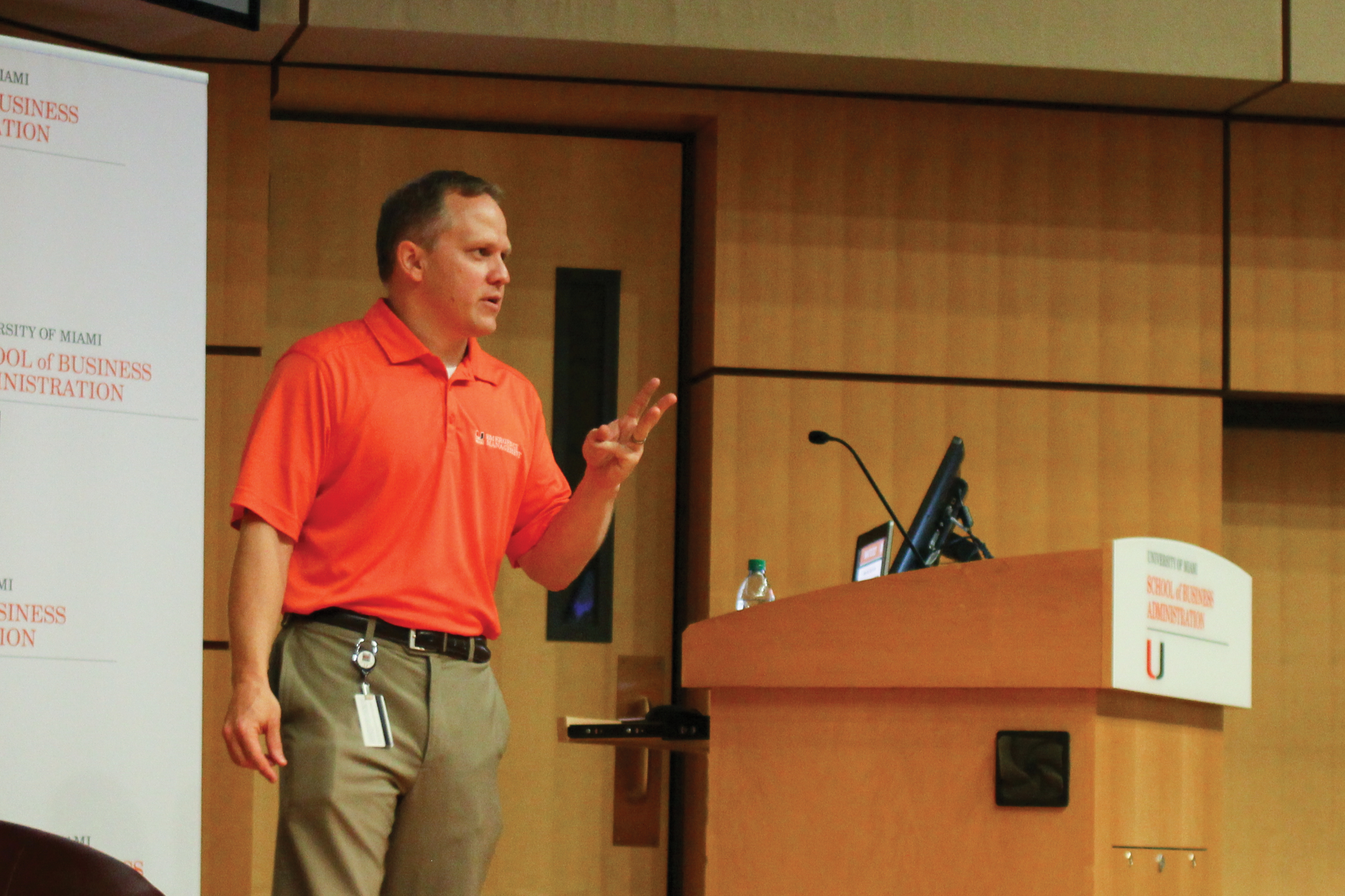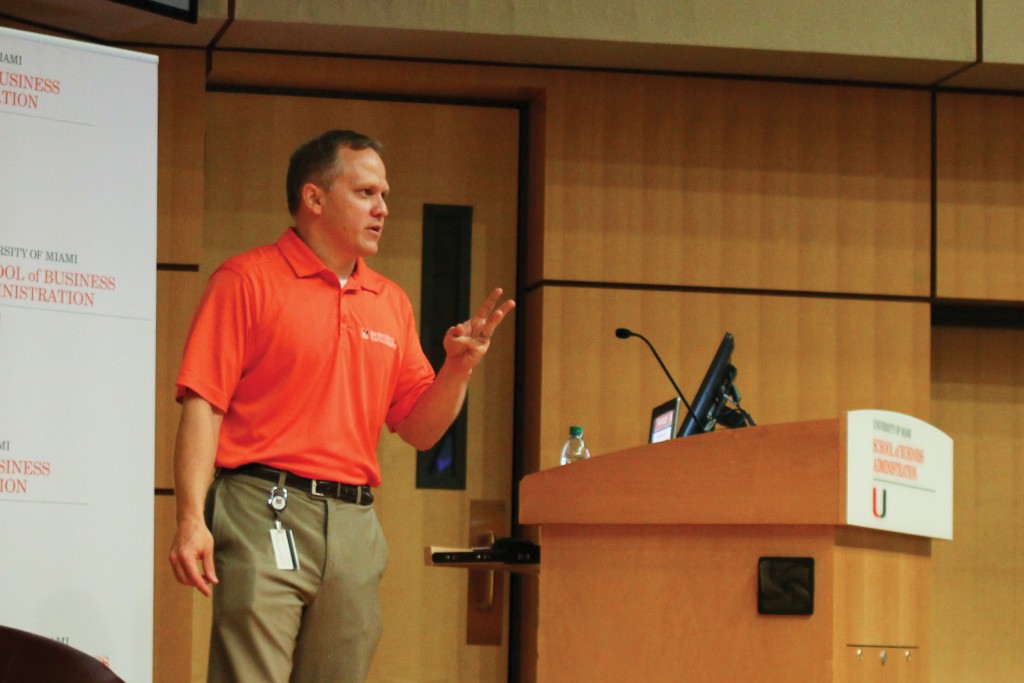

With the recent mass shooting at Umpqua Community College in Roseburg, Oregon in mind, Scott Burnotes, director of the Office of Emergency Management of the University of Miami, taught faculty members and students how to react during such crises on Tuesday night. It was a conversation no one wanted to have, but administrators felt was necessary.
Speaking at the Storer Auditorium in the School of Business, Burnotes, who has more than 10 years of emergency and disaster relief experience, explained three simple safety measures to follow called “The Three Outs:” Get out, hide out and act out. These methods ensure the best chances of survival.
The first, “Get out,” means evacuate. Find an escape route that will avoid crossing paths with the shooter.
“The key is to take action very quickly,” the former police officer said. “Get out as fast as possible and get far away.”
He stressed that the priority is always to evacuate. If that’s not an option, then the next option is to hide. Improvise locking the door by putting heavy items behind it to block its opening. While the doors at University of Miami will lock remotely if the situation arises, it may not be enough, because the assailant is very likely to be connected to the university, either as a student or as staff.
Items around the room such as tables or chairs can serve as a blockade to prevent the shooter from coming inside. Burnotes explained that the shooter probably would not waste time trying to get into a locked door. All they want to do is unleash as much damage as they can in the short amount of time that they have before authorities come. Once barricaded, concealment is a must.
“Hide. Shooters are not going to search through things, they will only shoot what they see,” Burnotes said. He recounted stories of survivors from Virgina Tech and Newtown Elementary School. Those who hid were safe, whereas those who tried to flee from hiding were killed. “The shooters know they have limited time and will not search inside a cupboard, for example. Stay hidden, stay out of sight.”
The last one, acting out, is not encouraged. Burnotes stressed that it should only be used as a last resort. As it states, one should act out by trying to disarm the assailant.
“Fighting is a last resort. It is used only after you implement running out or hiding. If it doesn’t work, then disarm him,” Burnotes explained. “This is just to buy time to wait for the quick response of law enforcement.”
The national average of authorities arriving on the scene is 10 minutes. With UMPD patrolling actively on campus, it would take them approximately less than five minutes to respond. They would serve as the first wave before other law enforcement arrive to neutralize the situation.
To respond to the threat of a shooter, the authorities would arrive equipped with ballistic helmets, heavy body armor and high-powered weaponry.
“Unless law enforcement engages the shooter, the shooting will not stop,” said Burnotes.
Shooters are unpredictable and have no single profile. Shootings at Umpqua, Aurora Theatre and Texas Southern University showed that it is very difficult to know when a shooter is coming. While the Oregon shooter posted disturbing content online, it was not taken seriously until it was too late. Burnotes explained that there are indicators of violence. Some indicators they gave were the development of a deep personal grievance, a recent fascination with or acquisition of multiple weapons, a recent escalation in target practice and weapons training, and inappropriate and intense fascination with previous active shootings or mass attacks.
Emergency alerts are used to notify members of the university of any threatening incidents. This includes social media, cable TV and digital signage, outdoor sirens, outdoor public address and others. All will simultaneously be activated in such an event. The university wants to ensure that as many people as possible are notified.
“The notification is for the shooter as well. It’s to let them know that we know they are there and we are coming,” Burnotes said.
The event was introduced by the Dean of the School of Business, Eugene Anderson, who emphasized why it was crucial to have the event.
“Safety and security is a top priority,” Anderson said. “We have an open environment in the university and tracing all the way back to Columbine [High School], we seem to be having an epidemic.”
Classes are available for groups, large and small (minimum class size of 15), and may be scheduled any day of the week at whatever time best accommodates the audience. Call the Office of Emergency Management at 305-284-8005 or email oem@miami.edu to schedule training.
The program’s website can be found here.
If students see anything suspicious, they can call the following numbers:
– Dean of Students at 305-284-5353
– UMPD at 305-284-6666
– Emergency at 911






